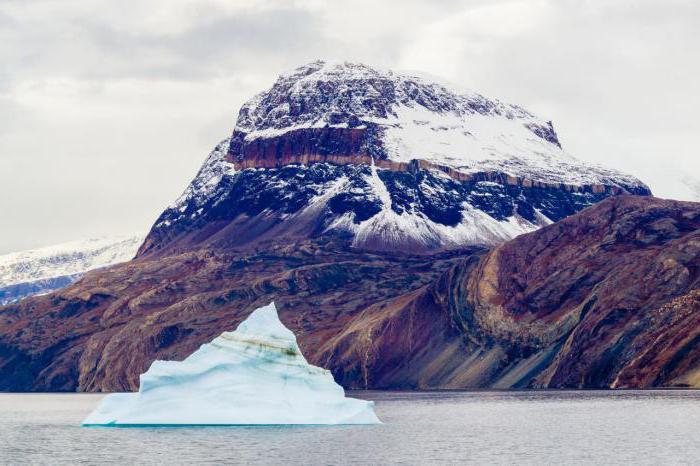On Earth, there are many different processes, including geological. These are movements of lithospheric plates, mountain building processes, and so on. Our planet has undergone many transformations throughout its existence. Specialists have identified several historical periods of tectogenesis - sets of tectonic processes, one of which is the Caledonian folding.
Definition and time frame
The name was given by the European scientist Bertrand in the 19th century and comes from the ancient Latin name of Scotland - Caledonia, because it was there that it was discovered. Caledonian folding is a complex of tectonic phenomena in the Paleozoic (510-410 Ma ago).
The characteristic movements of the lithosphere during the considered period of time were: active folding, orogenesis and granitization. They caused the formation of typical mountain ranges, caledonides.
The very first stages of the Caledonian folding began in the middle of the Cambrian. The central stages covered several geological periods: from the end of the Ordovician to the middle of the Devonian.
General characteristics of periods
In the Cambrian period, the climate was sultry; local icing was also observed. Almost everywhere transgression occurred. Sedimentary and marine layers prevailed. The seas retreated from certain areas (for example, the Russian platform), the appearance of mountain systems of the Caledonian folding (Sayan, Appalachian mountains, etc.). The fauna was characterized by the appearance of very small skeletal organisms (less than 1 cm).
In the Ordovician period, the climate became warm, tropical; the end of this period of time was marked by glaciation. There has been a significant increase in sea level in all areas except Gondwana. Among rocks, carbonate and marine sediments, volcanogenic rocks were common. A very significant accumulation of organic matter was carried out. The organic world has expanded significantly: the number of species of living things has tripled. By the end of the period, glaciation occurred, resulting in the global extinction of many living organisms.

The Silurian time stage was characterized by a warm climate, which then became anhydrous and sultry. At the dawn of this time frame, the melting of glaciers led to significant transgression. Silur ended in a vast retreat of the sea. Clay layered minerals, carbonate marine deposits and rocks of volcanic origin prevailed. The early Devonian period was characterized by aridity. The continents were covered with mountain systems of the Caledonian folding, divided by intermountain depressions. In Lower Devonian, the climate became tropical. Massive red sandstones, gypsum, salts, and organogenic carbonate rocks were typical of the rocks. Devon was a period of relative geological stability. The organic world has been enriched by new genera and species: the first amphibians, spore plants. Frequent hydrogen sulfide pollution of water bodies caused a massive extinction of marine biota.
Areas and mountain systems
What mountains in Caledonian folding do they study in school? These are the Andes, the Western Sayan, the Mongolian Altai, the Ural Mountains. Among other things, the mountainous territories of East Australia, Greenland, Newfoundland and the Northern Appalachians are among them.
Areas of Caledonian folding in the European region are represented by Caledonides of Great Britain, some parts of Scandinavia. In the Asian territory, the following Caledonides are distinguished: Kazakh, Chinese, Sayan and Altai. Land areas with mountainous terrain are located in the Chukotka region, Alaska, and the Andes.
Features
Folded mountain systems are characterized by incomplete education. The most complex structure is characteristic of the Scottish, Scandinavian and Greenland Caledonides.
A feature of the vast tracts of the earth's crust that recently appeared on the site of caledonids was high activity. At the end of the stage of extinction of parallel movements and smoothing of the planet’s surface, these areas underwent geological stimulation in the Lower Paleozoic.
The most characteristic features of Caledonides are inconsistent rock deposits, as well as the accumulation of massive red-colored layers.
Typical Minerals
The processes occurring in the territories of the Caledonian folding are interconnected locations of ores Fe, Ti, Au, Mo.
Deposits of asbestos, talc, magnesite and, in some places, chromium, platinum, nickel and native copper are also very typical. Hydrosilicate deposits of iron ores, hydrothermal deposits of gold, pegmatites and quartz veins with tungsten and molybdenite are known.
The main minerals in the Cambrian period were: oil - Russia (Irkutsk), Sahara, Baltic; rock salt - Siberia, India. Phosphorites were concentrated in Central Asia, China and Vietnam; asbestos - in Tuva; bauxites - in the East Sayan.
The Ordovician period was rich in oil - the USA; oil shale - Baltic; Iron Ores - Western Sayan, Canada. Copper and cobalt were present in Norway.